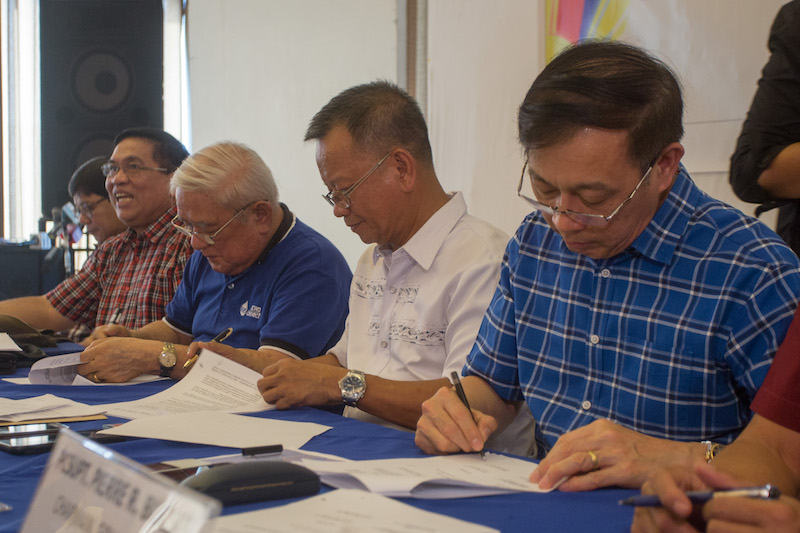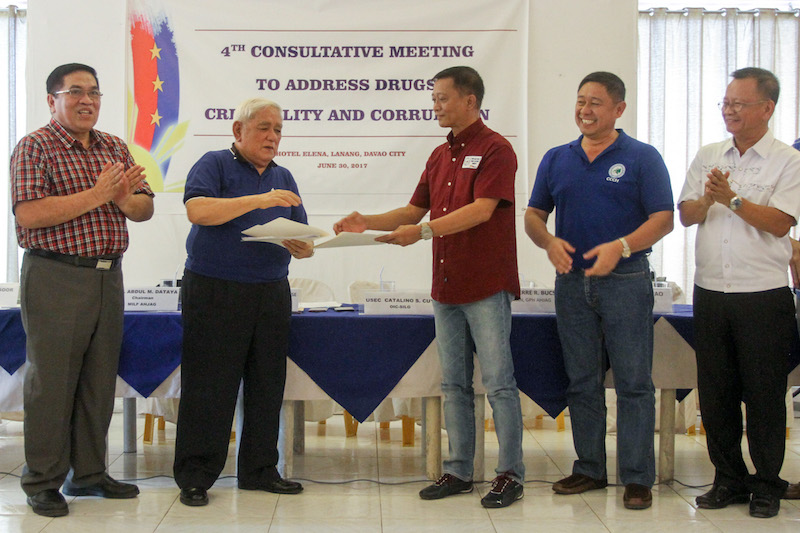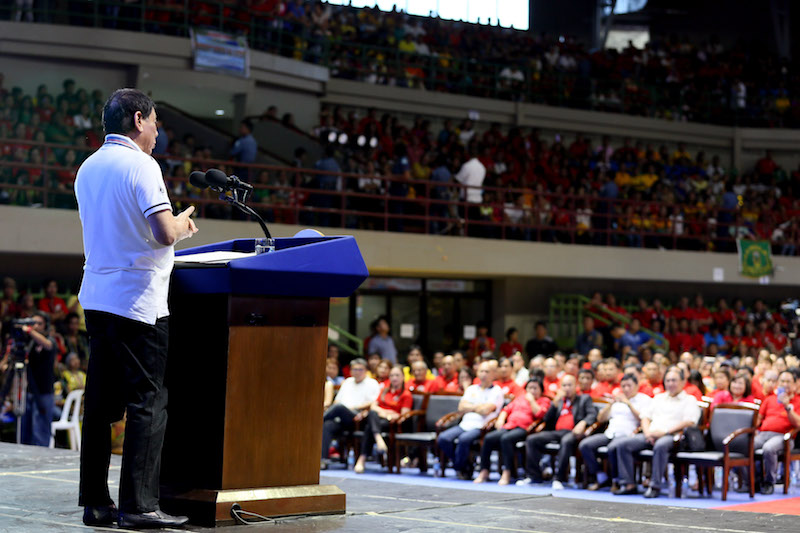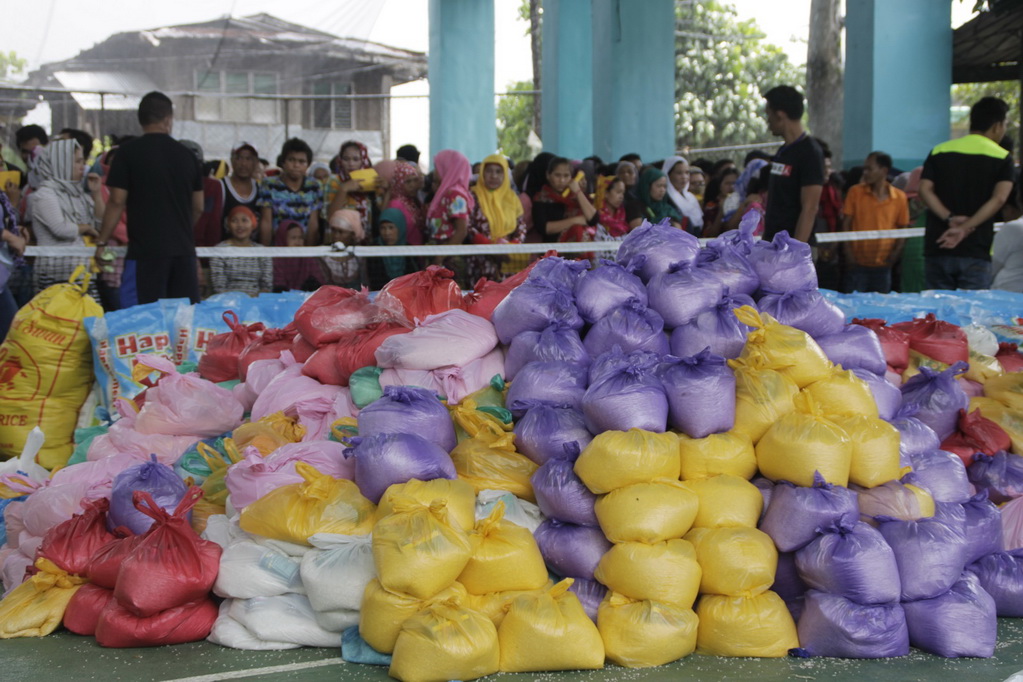
A pensive Duterte confronts Mindanao tragedy
Philippines’ president discovers the impermanence of his Mindanao connections
The destruction of the Islamic city of Marawi has tragically confounded the aspirations of President Rodrigo Duterte, the small-town mayor who became the Philippine President and has discovered that his ambitions outweighed his capabilities.
Based on his experience as the mayor of Davao City, where he had a friendly relationship with the region’s Muslims, Duterte promised during his presidential campaign to deliver an elusive peace in the southern Philippines in his term.
The fighting that raged throughout Ramadan to flush out terrorists pledging allegiance to the Islamic State has reached catastrophic proportions not seen in the recent cycle of violence on Mindanao island. The Islamists at the very epicenter of his polity say they want to establish a caliphate, with jihadis crossing onto Mindanao’s unguarded beaches from Yemen, Malaysia, Indonesia and other countries.
The president too has not been seen in public – raising serious questions over the 72-year-old’s health –for the most part of the crisis that has claimed more than 400 lives, displacing tens and thousands of Muslims, while the military battled in what was once a heritage city that has gone to ruins, the fighting now tapering off in its sixth week.
Suddenly appearing at the presidential palace for the late celebration of Eid al-Fitr, Duterte said he was saddened and angered and fell back to his default mood of cursing the tragedy of the Maranao tribe in Marawi – whom he had often boasted were among his blood families.
No longer the tough guy
And the tragedy for the president is that his pulse of Mindanao, of which he is a “proud son,” is no better than those of his predecessors who also had to face the rawness of the decades-long conflict. It has dismantled his armor of being the tough guy in the neighborhood.
The map of Mindanao has been scorched with far too many killings, battles, burnings – reaching major proportions seemingly every two years, the last of which was a botched police operation in early 2015, before that a rebel siege in a largely Christian city in 2013, and the killings of scores journalists by a warlord family in late 2009.
The battle for the city of Marawi in northwestern Mindanao, whose population once numbered 200,000 but which is now wrecked, has defied military logic, with the commanders forced to send in the armor and artillery and to pour down bombs in a series of air strikes, asking help from the Americans that Duterte had scorned, to bear the brutal challenge of the terrorists’ arsenal of high-powered weapons.
No longer fighting and running
It used to be that rebels would fight, withdraw, and fight another day. Not this one.
The president hadn’t realized that the Maute group that he had belittled would strike in such a spectacular show of force. He said himself that if it had been a war against the old guard of the Moro National Liberation Front and its breakaway Moro Islamic Liberation Front, he would have “endured it and pleaded peace with you.”
“What is painful to me is the entry of a fractured ideology and they don’t even know what they’re doing. All they want is to kill and destroy,” he said. “If they went to a forested area, claim a particular mountain and fight there I could have forgiven them.”
That was the specter of Marawi: radicalization choosing Mindanao to make its mark in Southeast Asia from orders in the Middle East. When the fighting broke out on May 23, the terrorists could have taken over, raised the black flag over the hills of the army brigade camp, to establish a wilayat, an Arab word for a dominion, that would have been of unimaginable consequences. They were stopped in the nick of time.
The president said it would not have worked anyway, because “we are a Malay race, we are not that brutal and we respect life.” Had he not known that terrorists who had first come to the shores sowing violent extremism in the minds of the local rebel groups were from Indonesia and Malaysia, and were ethnic Malays?
Open park
Mindanao is an open park for the terrorists crossing the waters from neighboring countries in the southern fringes; and without strict identification control and border patrols that are emblem of internal security. it’s a walk to the rebel enclaves.
The plains and the mountains around the borders of Lanao del Sur (of which Marawi is a part) and Maguindanao provinces have been training grounds since the 1990s for Al Qaeda and Jemaah Islamiya. It was then that an Indonesian named Ibrahim Ali was among the first batch of the so-called cadets.
It was Ali, according to one intelligence report, whom the IS had wanted to designate the emir for Southeast Asia but who was killed in a shootout in late 2015 in the Philippines’ Sultan Kudarat Province, that was intended to capture a leader of another rebel group. The military was to discover later that it was Ali the bomb maker who was among the casualties.
Consequently, it was a daring leap for Isnilon Hapilon to be named the emir for the Southeast Asian Caliphate from his Abu Sayyaf rebel base on Basilan island to the mainland’s northwest frontier to join forces with the Maute family – steeped in money and in clan wars – that held fort in a remote town called Butig, about an hour away by land from Marawi.
It was believed the Mautes had previously harbored radicals, one of whom was an Islamic teacher from Indonesia who was killed in late 2012.
Two of the Maute sons became the up-and-coming terror bloc generation, going by the deeds of the Islamic State that were evidently a departure from the main rebel groups negotiating peace with the government. The Maute group was responsible for the bomb attack last September in President Duterte’s hometown of Davao, a blow to what was supposed to be an impenetrable “alternate seat of power.”
Twice in the midst of the crisis in Marawi, the president withdrew from public view, sparking rumors of failing health. He had boldly announced that the siege would come to an end on the Philippines’ Independence Day, June 12, but that didn’t happen as the battle went on to take control of the city while he himself missed the celebration that was expected of a president. His spokesman said he needed to rest.
Meanwhile he had declared martial for the entire island of Mindanao, reminding his guests at the palace gathering for the Muslim festival, seated at ornate tables under bright chandeliers, that the Marawi crisis had forced his hand.
False confidence
“I knew everything,” he said, “I knew the deployment of the snipers and where they hid the weapons. I already had a complete picture and I knew it would be a long fight.”
He had been in Moscow when the fighting struck in the afternoon of May 23, raising the question of how much he really knew, when on his Russian trip he had in his entourage about 50 police and military generals that included senior commanders and their deputies who took their wives along in what became evident as a junket.
Scattered information from the intelligence community had sensed that something was afoot a couple of weeks in advance, sources said, taking notice of a swelling of forces in the Maute stronghold. One intelligence group from the Navy, dubbing their project Target Pocket Bingo, had been following Hapilon for about three years, maybe more.
Eventually crumbs of information led them from the southern islands all the way up to Marawi, where special units of the army and the navy were called in for the hunt. Within half an hour gunfire erupted from the building in which Hapilon was believed to have been staying, triggering a battle that has changed dimensions in the conflict.
The military said Hapilon might have escaped the fighting and that they believe one of the principal Maute brothers has been killed. Weeks on, the president told his audience in the palace that a casualty among the Maute family was a cousin, “did you know that?” – putting himself in a perplexed state of having been deceived, making him a victim among the thousands of Maranaos who had lost what they had because of “this adventure.”
“Ungoverned spaces”
He promised, again, to rebuild Marawi from the rubble, to bring back its prosperity – if by that he meant its shadow economy thriving on guns and drugs and other illegal trades. The city may well be the denouement of things that can’t go back to the way they were before. It was one of those “ungoverned spaces” labeled by the navy’s special operations force that has caused radicalization to fester.
The military was one step behind in having tried averting it, but it wasn’t fast enough to douse the fire of violent extremism.
After it has been destroyed in order to save it, Marawi has to be resurrected with a symbol erasing the past. It will have to start on a clean slate, this crisis being a heartbreaking wake-up call for all of Mindanao. The president may have to stop harking back to his one-dimensional view of the Muslim narrative, because it has to move forward or risk greater failures.
He said he couldn’t bear watching the suffering on television, he would turn it off or change the channel to watching cartoons instead.
[Criselda Yabes is a prize-winning journalist and longtime contributor to Asia Sentinel]




